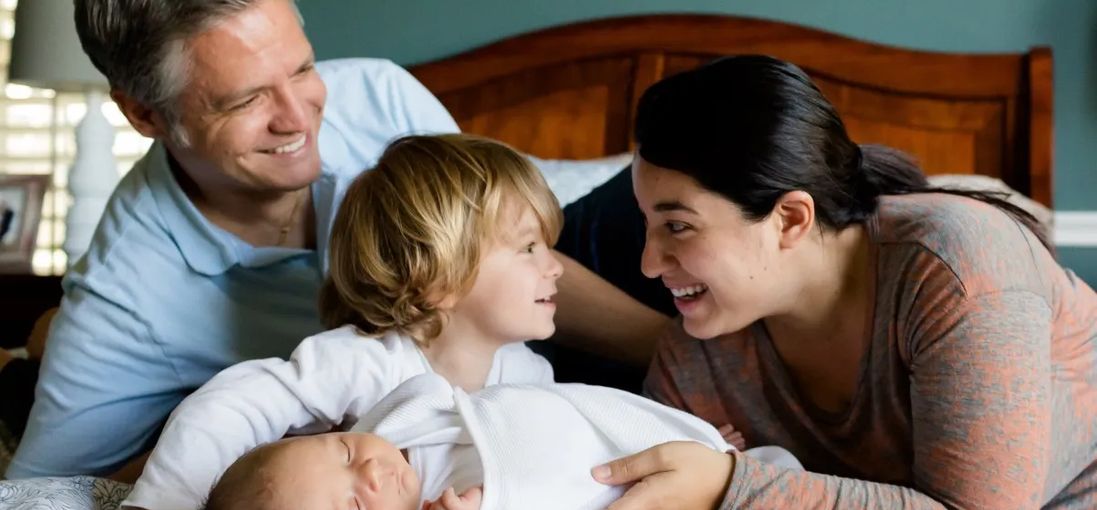5 Things You Need to Know When Co-Sleeping with Your Toddler
November 21, 2019 | by harper reid
Perhaps you’ve been wondering if co-sleeping with your little one is right for your family. Co-sleeping can be perfectly safe, provided you follow the recommended safety precautions. As your baby grows into toddlerhood, there are fewer risks, making it an appealing choice.
Read on to find out five things you need to know when co-sleeping with your toddler.
Create a welcoming sleep environment
Creating a sleep-inducing environment for your toddler is imperative. Whether it be for co-sleeping or sleeping alone.
Refrain from working or occupying the same room as your sleeping toddler before you sleep. Any distractions could cause poor sleep and insomnia. Use blackout blinds or curtains to prevent any bright lights shining near their face. Some children may also prefer a soft night light to help them sleep.
Avoid using a laptop or computer screen in the same room while your child is trying to sleep. Blue light is emitted from electronic screens. This blue light suppresses melatonin, a hormone involved in sleep regulation.
Bed safety
Bed safety is sometimes overlooked. Childproof the bed you are sharing with your toddler. (Think bedrails, securing fitted sheets, and being mindful of and eliminating gaps where your child could become stuck).
Keep the bedroom tidy and free from toys with small, sharp parts. One way to avoid toys from ending up in the bed is to have adequate storage close to the bed. Storage boxes and shelves are great options. Keep storage within reach of your little ones so they can learn to store their toys. Be sure to have the bed safety-proofed before they go to sleep. This is important in case you doze off when putting them to bed.
Babies should have their own bedding, but once they’ve reached toddlerhood, you can start to share your bedding with them. Opt for layers of sheets and blankets instead of a single duvet so they can remove a layer if needed, to keep cool. Ensure there is nothing on the bed or around their face that would obstruct their breathing.
Think of future transitions
Although you may want them to, your children won’t stay little forever. Eventually, they will need to sleep in their own bed.
Having co-slept with you for most of their life, your toddler may struggle to transition to their own bed. Your child may also have trouble with a babysitter and may struggle with independence.
To ease the transition from co-sleeping for your child, the key is to gradually shift that gear, in order to avoid separation anxiety as much as possible. Begin by placing their crib or bed next to your bed. Then once you transition your toddler into their room, make it an inviting place. Decorate their room and read them bedtime stories. For your peace of mind, you might benefit from a baby monitor in their bedroom.
It’s not for everyone
What works for one family may not work for another.
Many people who adopt co-sleeping into their lives boast more hours of sleep and decreased time for their kids to settle. For some people, however, a wriggling toddler may keep them up all night.
It’s up to you to find out what works best for your family. Co-sleeping is not a one-size-fits-all solution, and it may take time (and patience on your part) for your toddler to adapt.
When not to co-sleep
Situations apply where co-sleeping comes with increased risk.
Second-hand smoke, although invisible, can be harmful to your toddler. Even if you or your partner smokes outside, there is some risk involved. Refrain from co-sleeping if you or your partner smoke.
Reduced awareness also carries risk. This includes if you are under the influence, whether it be alcohol or extreme tiredness. Instead, place your toddler in their cot or bed next to you.
Co-sleeping should always be in bed. Sleeping on a sofa or armchair increases the risk of SIDS significantly.
Co-sleeping may be an excellent, fulfilling experience for your family. Your toddler may settle easier, fall asleep faster and have better quality sleep. If performed safely, co-sleeping may be a great option to connect with your little one.






